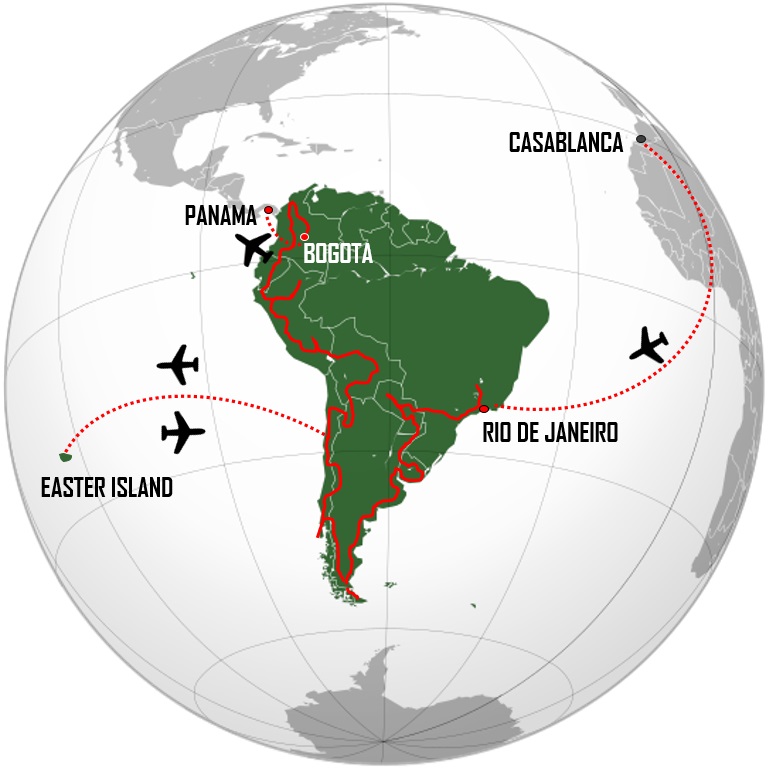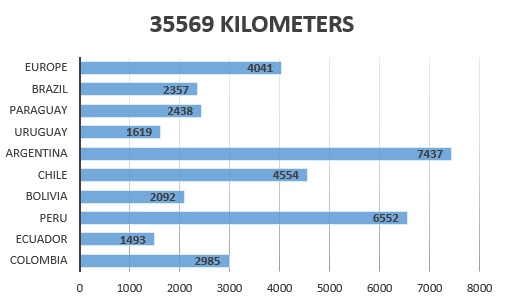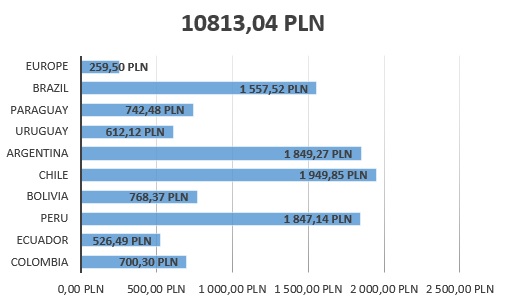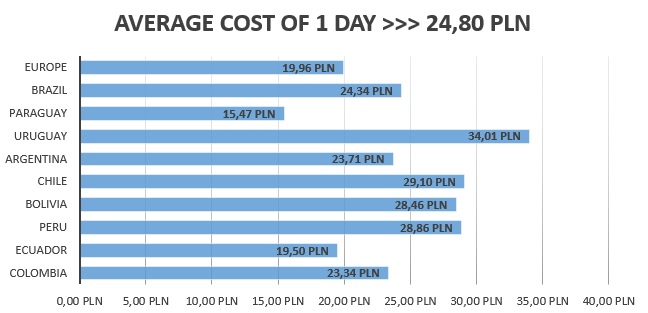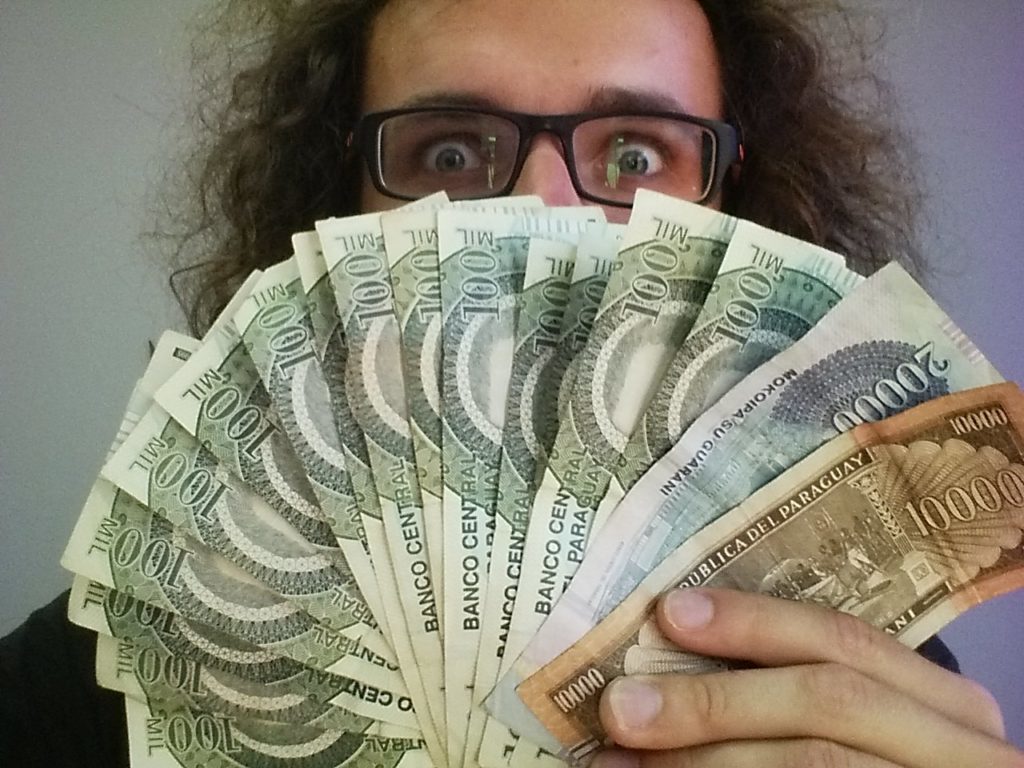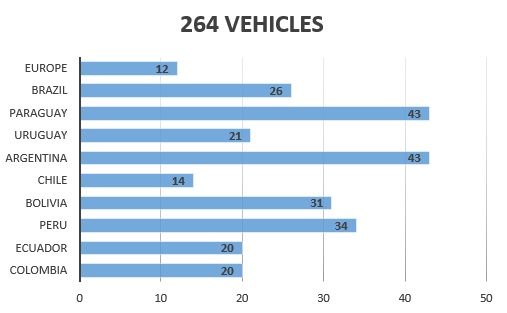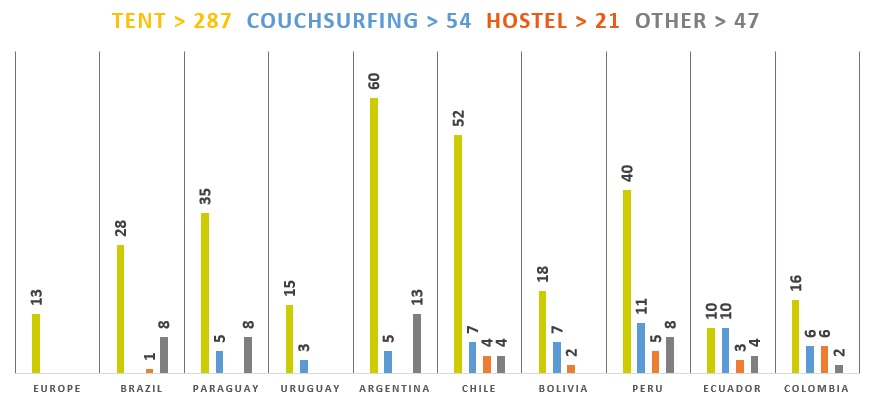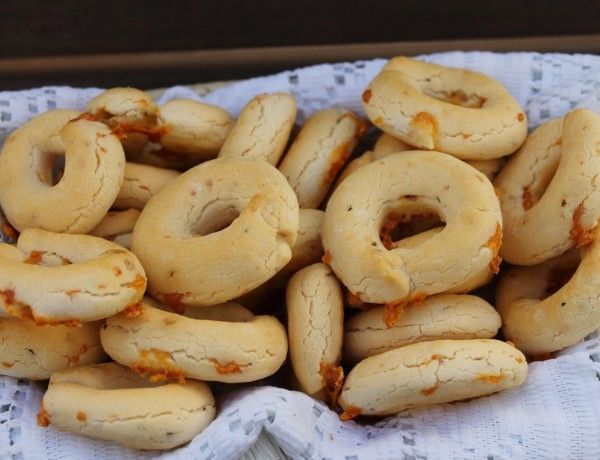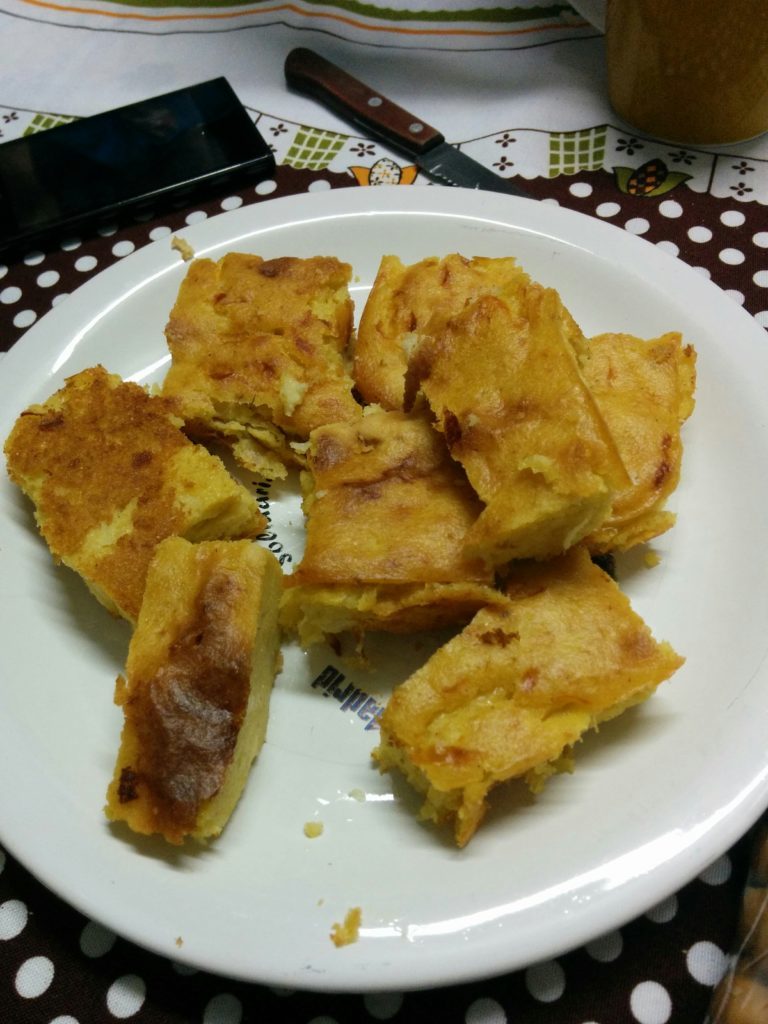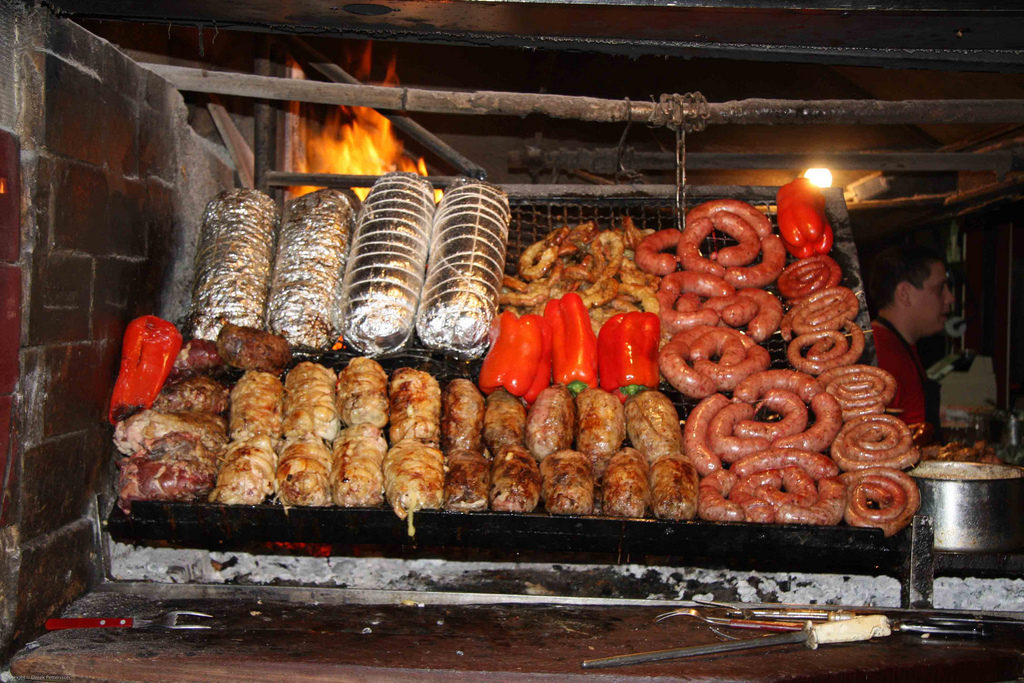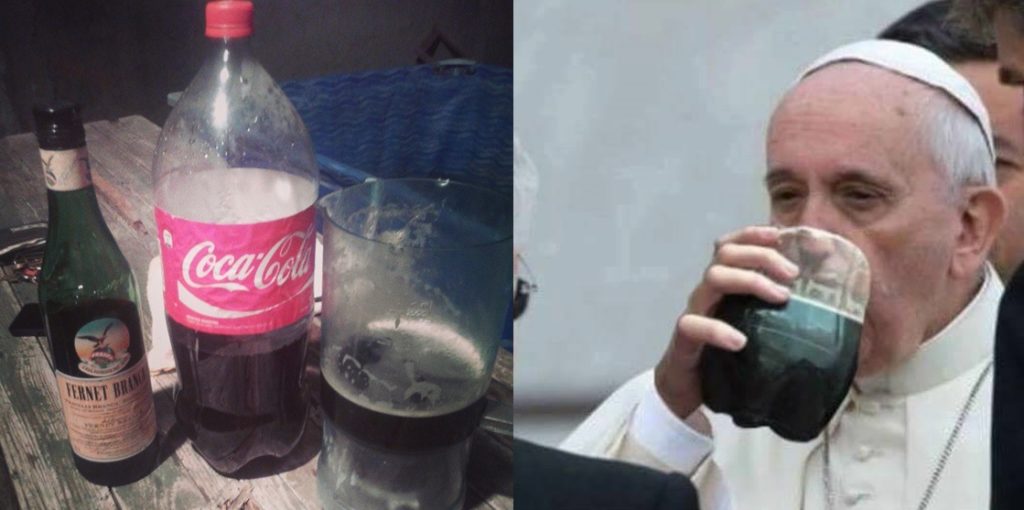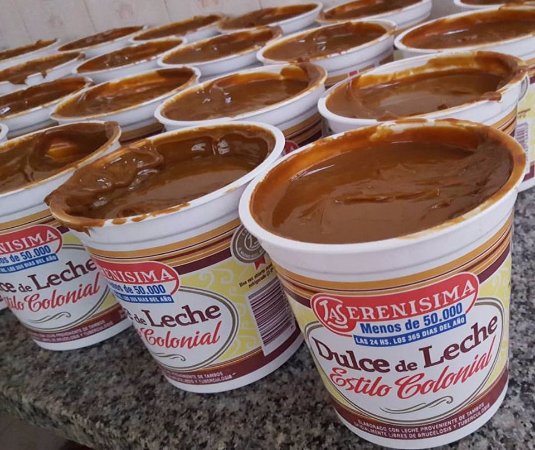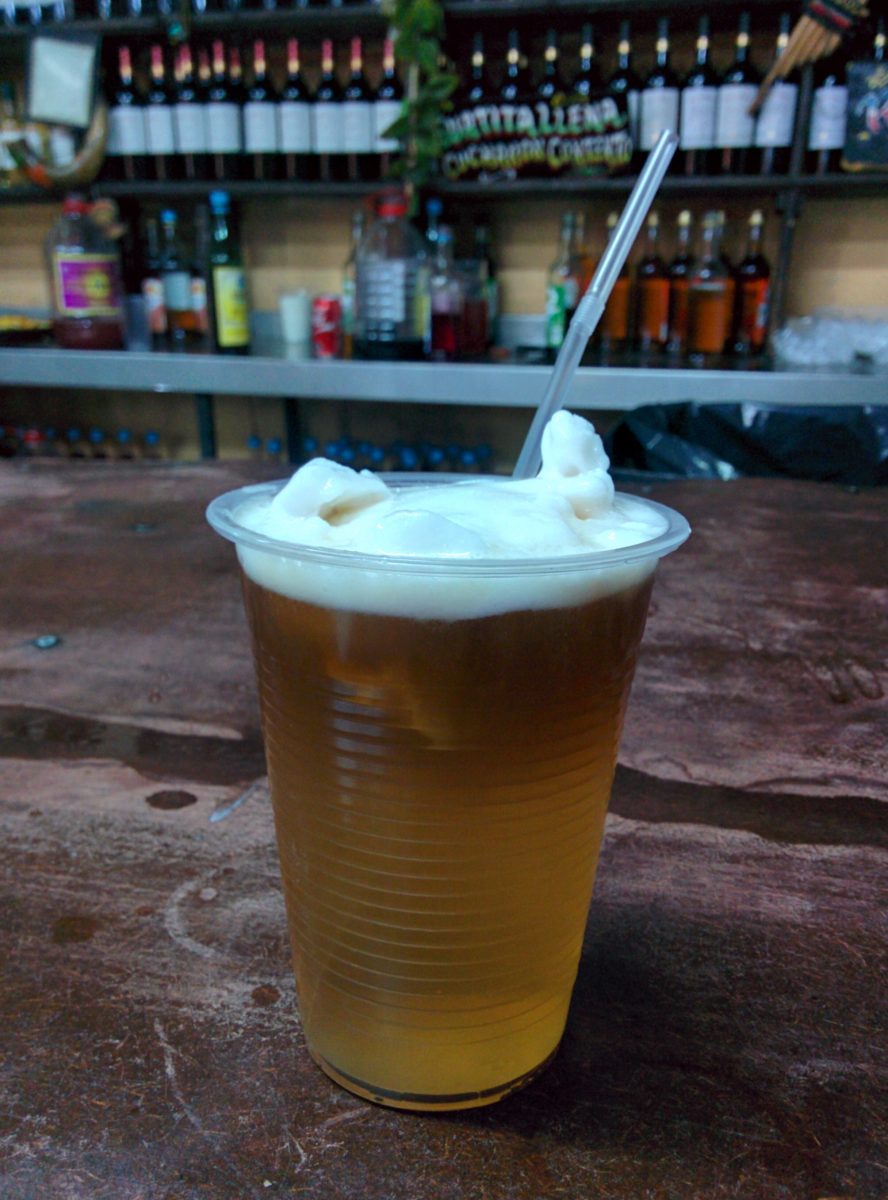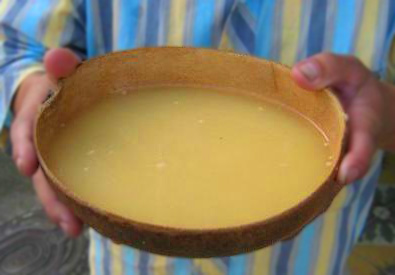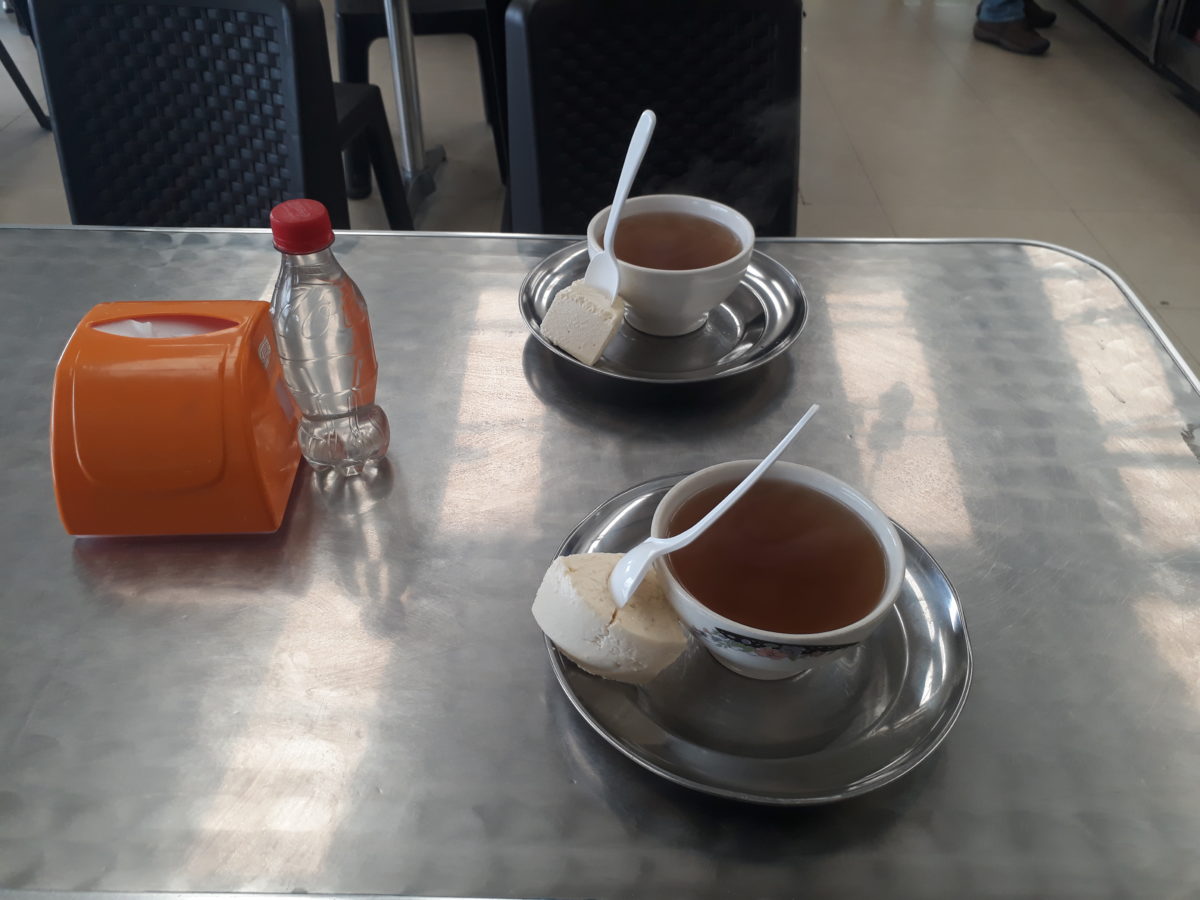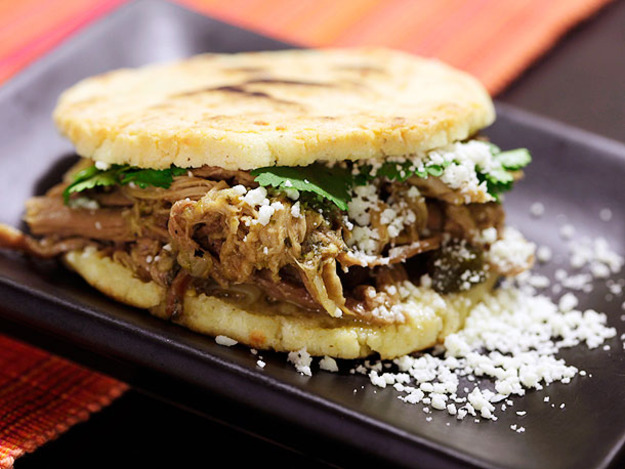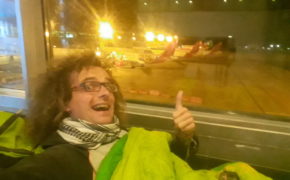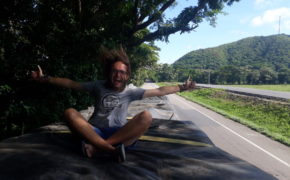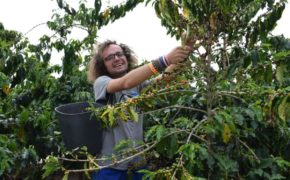Hitchhiking across South America. What and how, where and for how much.
International airport El Dorado in heart of Bogota. It’s 22:53. Body of iron bird, which gonna take me over Darien Gap (160km of virgin jungle) gonna take off tomorrow morning. It’s my last night in cocaine region. Next moon I will welcome over Panama Canal. I’m mooching around like Tom Hanks in movie Terminal, to find some place to sleep. Finally I found spot near big window. On other side are sleeping huge monsters with wide wings (airplanes dream of metal sheep?). I brush teeth in toilet, open my sleeping bag, secure backpack and… I can’t sleep. I’m flying over my 15 months in South America. I see faces of people who I met, I taste ugly canned food, I feel sweat on deserts and ice on my tent in Andes. Sum up what and how, where and how much. It’s my last night in Colombia, tomorrow I will be in Panama, so during that night I summarized my adventure in South America.
My opinions are extremely subjective. Maybe are close to true or maybe, because of places which I visited, adventures, people who I met, from true are so far away as Moon from Earth 🙂
COUNTRIES – DAYS – KILOMETERS
Reached countries:
- Europe ( Poland > Germany > France > Spain > Portugal )
- Africa ( Marocco )
- South America ( Brazil > Paraguay > Uruguay > Argentina > Chile > Bolivia > Peru > Ecuador > Colombia )
My longest roll was across Argentina (78 days) and shortest through small Urugay (18 days). It’s quick or slow? I don’t know, I thought that I go in good for me speed. Not so fast to remember country only as a splashed spot through car’s window, but also not so slow to change in stone in one from villages in the middle of nowhere. Tripadvisor and uncle google, who I asked “what to see in” were my main guides, and with theirs help I saw 70%-80% of suggested places. I dropped there anchor for 2-3 days and I went further. So if You wanna travel on this side of Big Water secure more or less amount of days with I spend in every country. Of course, You can travel faster and slower. Most important is to travel in Your own speed 🙂
I only miss Colombia. In Panama I had job in one hostel so I should be at time there. That’s why I spend only month in cocaine country. But that country have many things to offer, and it’s possible to till that land from south to north, from east to west, and to find new pearls. Same was in Brazil. But I have few stones from here so I have heavy reason to come back here in future 🙂
COSTS
I cheapened as much as I could. During 15 months I paid only one time for transport – for boat from tarapoto to Iquitos in Per. and I almost never for night (maybe few times but only for cheapest dungeons). I bought cheapest food. In first part in supermarkets and from Bogota, where began cheap food on streets, on cobble. Sometimes I went on freeganism tours to restaurant and shops. From Argentina I almost didn’t bought alcohol (I had it only when I met other polish guys or travelers from the same part of Europe, or just when I found really good occasion. Thanks God there wasn’t so much opportunities to buy it 😀 ). I didn’t drank because of prizes (small bottle sometimes cost same as a whole dinner), and later just because my believing. During my travel across Argentina and Chile I ate 83 cheapest, ugly canned food! My stomach wasn’t happy because of that… I didn’t bought clothes and my 8years old sandals were full of desert dust and histories. Sometimes someone gave me clothes, and sometimes (like in Ushuaia for example) I found clothes on bus stations and side roads. Mostly I didn’t bought souvenirs. Best for me are memories, friends, stones and number plate 🙂
I could safe money on material things, but never on mental experiences. That’s why I spend a lot of cash on museum, galleries and national parks. I went almost in every place. Most expansive ticket which I bought (not only during that travel but also in whole my life) was entrance to National park in Easter Island. 80US Dollars! But I don’t miss any single coin which I spend on entrances. In this places I was probably once in my life (or maybe I will come there but after many many years when maybe everything gonna be destroyed), so it’s really worth it to see that on our own eyes. No picture and movie can give You same experience and vision how beautiful, interesting etc. world is 🙂
I safe as much as I could, but still I spend few golden coins. During 15 months of my travel I spend 10813,04zł. I could spend a little bit more but plane ticket to Easter Island gave me my brother 🙂 Only with his help I could meet my other brothers with same high forehead as my 🙂 Sometimes I went on fumes and sometimes I felt like a millionaire and I ate two canned food in one day. Sure, probably there is possibility to travel more cheap and definitely to travel more expensive.
Definitely most expensive country in South America was Uruguay. So small and so expensive! When I bought there even cheapest bread and pelted down money but in the same time I pelted my tears. But also really difficult was in South of Argentina and Chile. Definitely cheapest country, where I felt like a king, was Paraguay. But just besides him was Bolivia and lovely Peru. On my road probably nowhere food gonna be so cheap as in shadow of Machu Picchu. Because where You can eat dinner with two dishes, something to drink and dessert?
There is also one “most cheep” category without I couldn’t summarize South America.
Cheapest drugs. Of course in Colombia. 2-3 grams of marihuana cost here around 0,5 US Dollars, and gram of cocaine for 1,5 US Dollars.
Cheapest alcohol. Trago in Peru. Trago is traditional alcohol made from sugar cane. We found one in crazy prize – 625 ml for 0,7 US Dollar! Seller is pulled with rubber hose transparent liquid from 40 liter’s barrel, like gasoline from tank, and is spilled to plastic small bottles from mineral water. Unfortunately it’s necessary to drink it very fast because really quick is connecting with plastic, and poor moonshine is changing in something what can take sight 🙂
Cheapest gun. Paraquay. One guy offered me gun for 30US Dollars + packet of bullets for additional 2 Dollars. Here human life cost same as dinner in restaurant.
Cheapest girl. Whole night with Colombian girl cost here around 5 US Dollars. Problem of prostitution is really huge here. It’s possible to find girl, maybe around 15 yers old, even in smallest villages who are offer theirs body like meet in butcher.
HITCHHIKING
Definitely two most difficult countries to find car are Uruguay and Bolivia. In Uruguay I spend in one place 24 hours, and I left it only because of help of other truck driver. He stopped in mystery truck driver’s sign 18 wheels monster. Later he convinced Roberto, to take as two. Besides that I caught whole day, from 8 to 20, huge party was when I made 100km per day! In Bolivia drivers were a main problem. Sure, they stopped but almost every time they wanted cash for ride. Thankfully for 7-10 those who wanted to earn was one who wanted just to help.
Easiest way to hitchhike was in Paraguay. When I walked on side road many people asked me when I want to go. Also here I had most crazy hitchhikers experiences: on many motorbikes, platforms, trolleys, grabbed one line to not fall down from luscious pickups etc. Pure fantastic craziness!
Most long I waited for car 3 (literally: three) days in north part of Argentina, in region Salta. Around one hour from Paso de Jama, one from borders located most high in the world, and between Chile and Argentina. In one moment there was small village stick to curve. I chose best place in that situation, threw backpack, putted out THS (Thumb, Smile, Hope) and I started to catch. After three nights which I spend in abandoned home located nearby, my smile changed in horizontal line, hope in wave of effing and blinding, and thumb in handful of stones in which I hit in some aims. Maybe I would leave that place much faster but in those days was Easter holidays, and that few cars which passed by were full of family and other things which they transport unknown from where, why, and where. When I write few cars I mean 8 (literally: eight) cars per day! I saw them from long distance, so when I lay down I had enough time to watch gregarious behaviors of alpacas, which passed in front of me in dry river, changing of winds depends period of day, drama of local society when drunk Jorge had accident on motorbike, and romances of couple in love. I had even opportunity to help in repair some car. Unfortunately he went in different direction.
Few more moments and drivers of local buses could make in that place new bus station. Gringo Station. Thankfully rescued me… some guys from Poland! They stopped near by to search right road. When I heard about polish language I run like a crazy and I shout “Help me! Help me!” They thought that someone is chasing me. But that was only vision of another days in that place 😀
In other countries hitchhiking was like in Europe. Sometimes it’s necessary to wait a little bit but always it’s possible to move on. Biggest distances is possible to make in Argentina. There it’s really easy to make 1000km in one car. But… why? For me that was to much, so I made maximum 200-300km per day.
Most dangerous moments in cars I had in Paraguay (when drug dealer bought in my car gun), in Peru (when I rode 140km/h in 51 tones truck sliding down in mountains serpentine) and Colombia (when we went 120km/h during cloudburst in truck without lights). Than I was really scared! Definitely best drivers are in Chile. They respect signalization, stripes, they stop for pedestrians. That really impressed me! In podium of worst drivers are those from Bolivia, Peru and Colombia. I just don’t know who should be on which place. When You will catch car there You should write before Your testament 🙂
Highest place which I reached in car: 4800m ASL
Highest place which I reached walking: 510m ASL, peak in Mountain Rainbows
Highest peaks of countries which I reached: Cerro Tres Kandu in Paraguay (842m ASL) and Cerro Catedral in Uruguay (513m ASL)
ACCOMODATION
Most often I camped in Argentina (60 times) least in Uruguay (10 times). Mostly there was no problem with that. Police many time gave me advice to camp near them, and local guys never made problems even when I camp in city center. Sometimes I was so tired that I camped in main square under some trees 🙂
Problematic was Chile. There camping in public places is prohibited. I heard many times from other backpackers how they paid huge fees for that. Thankfully I had only two meetings with police because of that. But in every case I didn’t paid anything because probably they thought that I’m not speak in Spanish 🙂 But even that, in small city Futaleufu, I camped between tourist information and police station 🙂 Nobody found me there and night passed without any problems.
I didn’t use Couchsurfing many times because I never knew when I gonna arrive to some place. Sometimes there wasn’t free Internet. And sometime I just didn’t want to make toadying. And I don’t have verified account, so I can send only 10 request for week. Besides one night in Brazil, until Chile I didn’t paid any time for night. In other countries I paid for night only in really big cities, when I couldn’t find other place to stay. That’s why 6 times I spend nights in hostels in Colombia. Maybe that was really good decision because from last one I took not only good dreams but also… lice 😮
Few nights I spend in “other” places. No, that wasn’t jail, bordello or aliens kidnaped me. Sometimes invited me under roof people who I met in cars, bars or in streets. Sometimes someone recommend me or offer shops, workplaces or car to spend night. That wasn’t classic night in tent or CS so went to category “other”. Probably most strange place where I spend night was container on border between Argentina and Chile. During that night came so GIANT storm that police rode around and took to city everyone who camped. Our container (our because I was there together with beautiful waitress) survive that night probably only because was concreted with ground.
I reached many abandoned houses, few garbage dumps, bus stops, lawns in front of shops, temples and many many other strange places. I have a lot of stories to tell about that 🙂
FOOD
There is many ways to know world. You can see, You can hear, You can smell and You can taste. Plate with meal is not only few chunks of food to fulfill empty stomach. It’s also man who prepared it, place where we receive meal and way how is served. In plate with food sometimes is possible to read more than in tourist guidebook. That’s why hunting on street food is one from my favorite activity. And in every country I looked for some interesting, unique taste. I think that flavors from that list are obligatory to know when You gonna visit countries in South America.
Brazil
- CAIPIRINHA. Brazil’s national cocktail, made with cachaça (pronounced [kaˈʃasɐ]) (sugarcanehard liquor), sugar and lime. Best in Rio de Janeiro in district Lapa. Cheap, tasty, and really sneaky 🙂
- ACAI NA TIGELA. Typical Brazilian dish made of frozen and mashed açaí palm fruit. It is served as a smoothie in a bowl or glass, and is commonly topped with granola and banana, and then mixed with other fruits and guaraná syrup.
Paraguay
- CHIPA. type of small, baked, cheese-flavored rolls, a popular snack and breakfast food in Paraguay and the Northeast of Argentina.
- SOPA PARAGUAYA. Literally meaning “Paraguayan soup”, sopa paraguaya is similar to corn bread. Corn flour, cheese and milk or whey are common ingredients. It is a spongy cake rich in caloric and protein content.
URUGUAY
- ASADO. Fried meat. Prepared on streets, swuares, in cities and villages. This country is full of animal’s fat.
Argentina
- FERNET. Type of amaro, a bitter, aromatic spirit. Fernet is made from a number of herbs and spices which vary according to the brand, but usually include myrrh, rhubarb, chamomile, cardamom, aloe, and especially saffron, with a base of grape distilled spirits. In Argentina prepared usually with coca and ice. Sometimes in cut plastic bottle 🙂
- DULCE DE LECHE. Is a confection prepared by slowly heating sweetened milk to create a substance that derives its flavour from the Maillard reaction, also changing colour, with an appearance and flavour similar to caramel.
Chile
- MARISCOS. Sea food, probably best in whole South America. You can’t leave that country without morning visit in local port to try sea food 🙂
- TERREMOTO. Traditional drink from Santiago, capital city of Chile. Prepared with white, young wine, ball of pineapple ice cream and shot of stronger alcohol or grenadine.
Bolivia
- CHICHA. Fermented (alcoholic) or non-fermented beverage usually derived from grains, maize, or fruit.
Peru
- CEVICHE. Is a seafood dish popular in the coastal regions of Latin America and the Caribbean. Though the origin of ceviche is hotly debated, the dish is most closely associated with Peru. It is typically made from fresh raw fish cured in citrus juices, such as lemon or lime, and spiced with ají or chili peppers. Additional seasonings, such as chopped onions, salt, and cilantro, may also be added. Ceviche is usually accompanied by side dishes that complement its flavors, such as sweet potato, lettuce, corn, avocado or plantain.
Ecuador
- BREAD. Even in smallest bakeries I found dozen types of bread. In one from villages I found more than 50 types of baked goods! Breadstuff which is surprising with consistence, inputs, used flour. Additionaly every region, or even city, have their own bread which You can try only there. Besides polish one, that one is probably the best in the whole world!
Colombia
- AGUAPANELA. Is made by adding pieces of panela to water and stirring until the pieces are entirely dissolved. The drink may be served hot or cold, with lemon or lime often being added. In the hot form, sometimes milk or a chunk of cheese is added in place of fruit juice. In Colombia, black coffee is often prepared with aguapanela instead of water and sugar, giving it a particular, appreciated taste.
- AREPA. is a flat, round, unleavened patty of soaked, ground kernels of maize, or—more frequently nowadays—maize meal or maize flour that can be grilled, baked, fried, boiled or steamed. The characteristics vary by color, flavor, size, and the food with which it may be stuffed, depending on the region. It can be topped or filled with meat, eggs, tomatoes, salad, cheese, shrimp, or fish depending on the meal.
Probably most strange dish which I ate was fried cayman, white larva of tree bug, Paraguayan soup (which is in 100%… cake!), smiling to me guinea pig. But most tasty country was Peru! So many types of dishes and inspirations from China, Arabia, Spain and whole South America are amazing!
SECURITY
I think that it’s possible to divide South America for two pieces. Safe and organized south and chaotic north. Brazil (maybe because was first country in which I travel) seemed to be quite dangerous. Many guns, not only in big cities. In Foz de iguacu someone shot in front of my house. About Rio de Janeiro and Sao Paulo is not necessary to talk. Also a lot of drugs. Same like in Colombia. A lot of strange, probably dangerous people not only in big cities. Assaults, robbery, and bags with drugs where absolutely everywhere.
For equality Argentina and Chile where I felt safe like in Europe. There is no tourist in Paraguay and Uruguay, so when people saw me there, they can’t believe that white guy came to theirs country. So nobody fought to robbed me, because how You can robbed white ghost? 😀 Peru also seemed to be safe. In Ecuadorian part of Andes seemed to be also secure, but I heard many times that in cost is quite dangerous. Generally Andes was really safe.
To sum up. Most safe country was Argentina, but generally whole Andes seemed to be also very safe. Most dangerous in Colombia (where two guys with machete wanted to robbed me, and from other backpackers I heard many stories when they meet “bad guys”). There are always exception to rules and in really safety Peru is also vary dangerous place – capital city. There also two guys attacked me and unfortunately successfully robbed.
What is interesting in whole countries people told me that theirs land is dangerous and I should watch out. In Colombia it’s obvious. But in Paraguay? In Argentina? I’m not sure if they have knowledge about country from television, where always is a lot of information about robbers and killers, or I had a loooot of lucky.
DEVELOMPENT
Argentina, Chile and brazil are most development country. Roads, police in full uniform (what is not so obvious because in other countries police is walking in sport shoes or with Hello Kitty backpack), Internet in every square and patrol station, monitoring, good cars, garbage cans, sidewalks, benches (which sometimes in other countries is really difficult to find) itp. Definitely most backwards are Paraguay, Uruguay and Bolivia. In that countries You can easily found places where is necessary to have 3 hours to pass 100km of road. I will not recall other indicators of development.
Somewhere between are Peru, Ecuador and Colombia. Sure, in every country are places more or less developed but when I think about that lists in that order come to me automatically.
Probably best capital city was Buenos Aires. Public transport, green fields, architecture, interesting places to visit, security, art and culture, education. It’s like in Europe! And maybe because of that I like it most? I had also nice vision from Quito, capital of Ecuador. But worst from Asuncion, capital of Paraguay. Wow, that place is so without taste! Big, dirty and boring.
BEST / WORST COUNTRY
In every country which I met, I found something good and bad. In every place I met good people and those from black star. But comprehensive best was Peru. Beautiful, open people, beautiful landscapes (from high mountains in South, through desert in coast to jungle on north), incredible heritage and history of Incas, tasty food and extremely low prizes. I missed a little bit of infrastructure and art, but it’s impossible to have everything 🙂
When I think about worst country, I see Uruguay or Bolivia. Closed people with who is really difficult to catch contact. Fulfilled with stereotypes, and sometimes hostiles. Hitchhiking is almost impossible. In Uruguay are extremely high prizes and almost nothing interesting to visit. In Bolivia really low level of infrastructure – from road to garbage cans (there are cities without any!). that’s why Bolivia is most dirty in whole South America. Real mountains You can confuse with huge garbage dumps and trash embankment’s are fringe roads for many kilometers.
COLLATION
Click to extend 🙂

